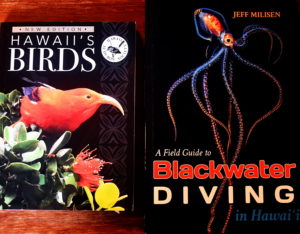
December 1, 2020
On my desk this week are two new, local wildlife books with cover photos that shout, “OPEN ME!” And when I do, which has been often, I marvel all over again about the diversity of Hawaii’s wildlife, both on our islands and in our surrounding sea.
One of these gems is the Hawaii Audubon Society’s new edition of Hawaii’s Birds. This 2020 update is the 7th edition, first published in 1967. I’ve been a big fan of the Society’s popular book since I moved here in the early 1980s and wondered, “What’s that bird?”
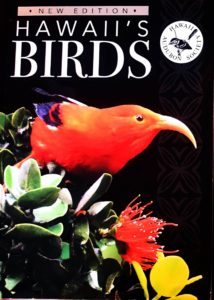
As an Audubon member, I was one of a flock of bird lovers who contributed to this edition. Photographers from Hawaii and the mainland donated breathtaking pictures, and other volunteers made revisions, added sections, reorganized content, and pitched in with the work of revising a book with endless details. (Names, protection status, sounds, colors, Hawaiiana, etc.)
The result, I’m proud to say, is a little paperback that everyone who has ever wondered about any Hawaii bird, from plovers to parrots, should have. It’s an inexpensive gift at $15 and buying it helps support the Hawaii Audubon Society. Order at https://www.hawaiiaudubon.org/product-page/hawaii-birds
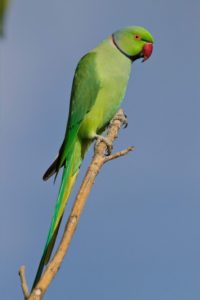
Visitors and residents alike often ask me about the parrots they see flying free in Hawaii. The new book includes photos of 12 species, released or escaped, that are established in the wild. None are native. All are on the State of Hawaii Injurious Wildlife list. This rose-ringed parakeet, native to Africa, is established on Kauai and Oahu. Photo from the book courtesy of Eric VanderWerf.
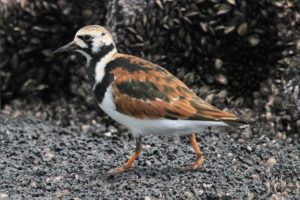
Several people have emailed me photos of Ruddy Turnstones (pictured), wondering if they are Kolea chicks. No shorebirds ever raise chicks in Hawaii, but sometimes Kolea and the smaller Ruddy Turnstones hang out together. Photo from the book courtesy of Tom Fake.
The other new book decorating my office this month is “A Field Guide to Blackwater Diving in Hawaii” by Jeff Milisen: https://mutualpublishing.com/product/blackwater-diving/ This Honolulu publisher is selling it for $15.99, a hard-to-believe low price for a book so loaded with fantastic photos that “Blackwater Diving” is a fine coffee table book as well as a useful reference.
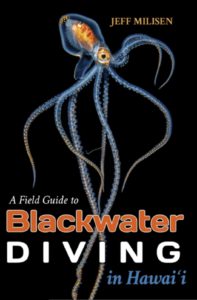
Blackwater diving is scuba diving at night in the open ocean. In Jeff’s case, that’s about 5 miles off his Kona home. Blackwater divers are tethered to a boat to prevent them from going too deep or drifting away.
During night dives, you see only the animals that swim into your narrow beam of light, from the surface to about 100 feet deep. It’s not for me (I like sunny days in shallow water), but we can be happy that Jeff Milisen, a UH alumni, has made a career of it. His photos of the animals that have made their way into his light streams, and within his camera’s focus, are stunning.
You can hear Jeff talk about his book with HPR’s Catherine Cruz on this week’s “The Conversation,” https://bit.ly/3gy94c8 (Scroll down. It’s the second segment.)
Jeff’s book features some of my favorite marine animals in their offshore home, creatures he calls the “blue fleet.” I call them members of the wind-drift community, animals that live offshore on the ocean’s surface, but during strong, prolonged winds, blow ashore.
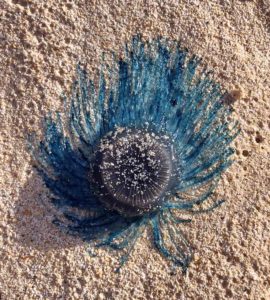
I found this blue button, a “blue fleet” member, last week on Lanikai Beach. Jeff Milisen’s book shows us what they look like alive and afloat offshore at night. ©Susan Scott
Jeff’s book also features animals I knew existed but have never seen, as well as rare creatures seen for the first time in Hawaii waters. The Hairy Goosefish, for example, is reason alone to buy this book.
Blackwater Diving is loaded with science-speak, but Jeff uses common English names and some of the explanations are understandable to the average reader. Others, not so much. This isn’t a warning. I love this book. It’s just that readers without marine science backgrounds will need a little help from Sir Google. As professional marine wildlife photographer, Doug Perrine, writes in the Introduction: “This book is best savored… next to a computer with the search browser open…”
I’m happy to add this book in my reference library—but after the holidays. For now, Blackwater Diving will stay on my coffee table with Hawaii’s Birds. I’ll page through these books while appreciating that, in the middle of winter, I’m comfortable wearing my favorite new T-shirt.
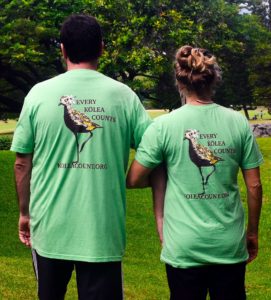
The first order of Kolea T-shirts sold out fast, but the second batch arrived this week. Modeled by seabird researchers, and Kolea counters, David Hyrenbach and Michelle Hester. Order for your plover lover at https://www.hawaiiaudubon.org/store